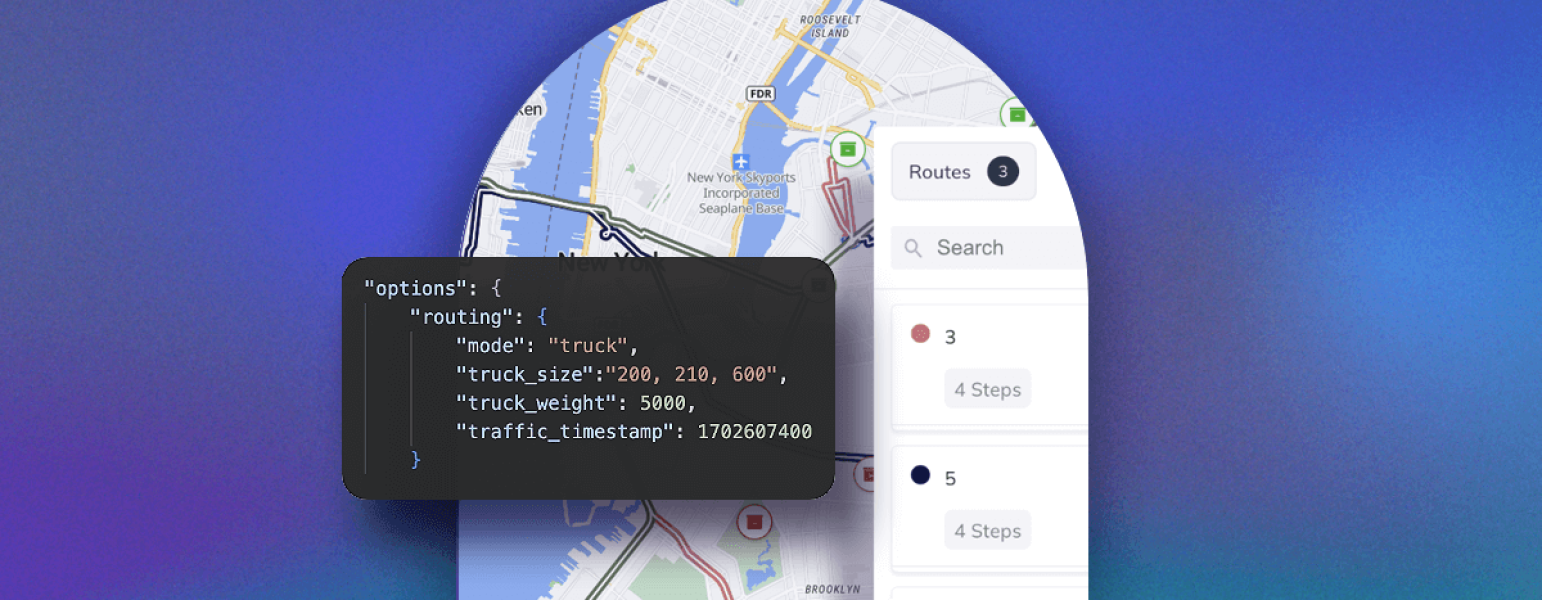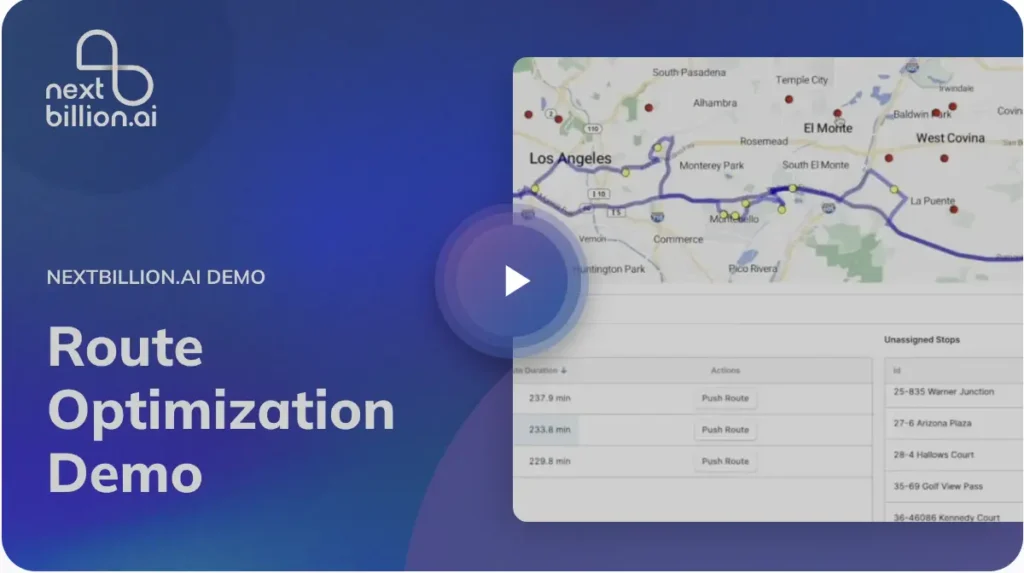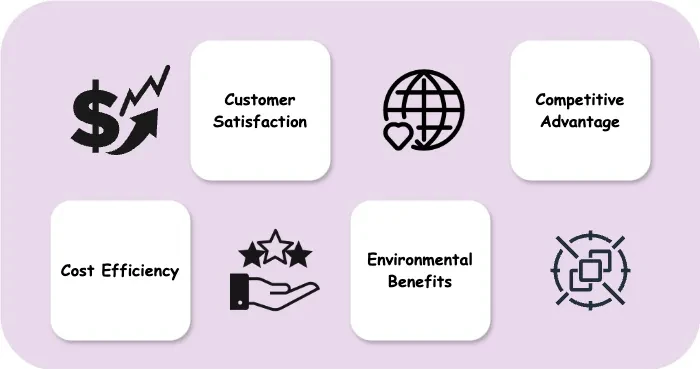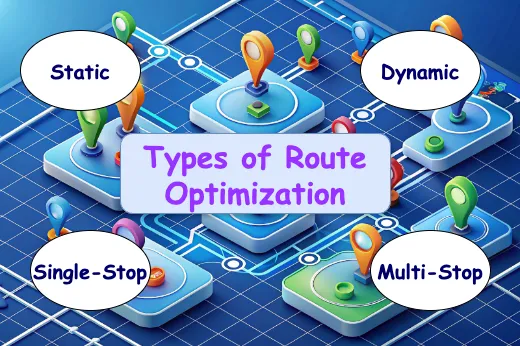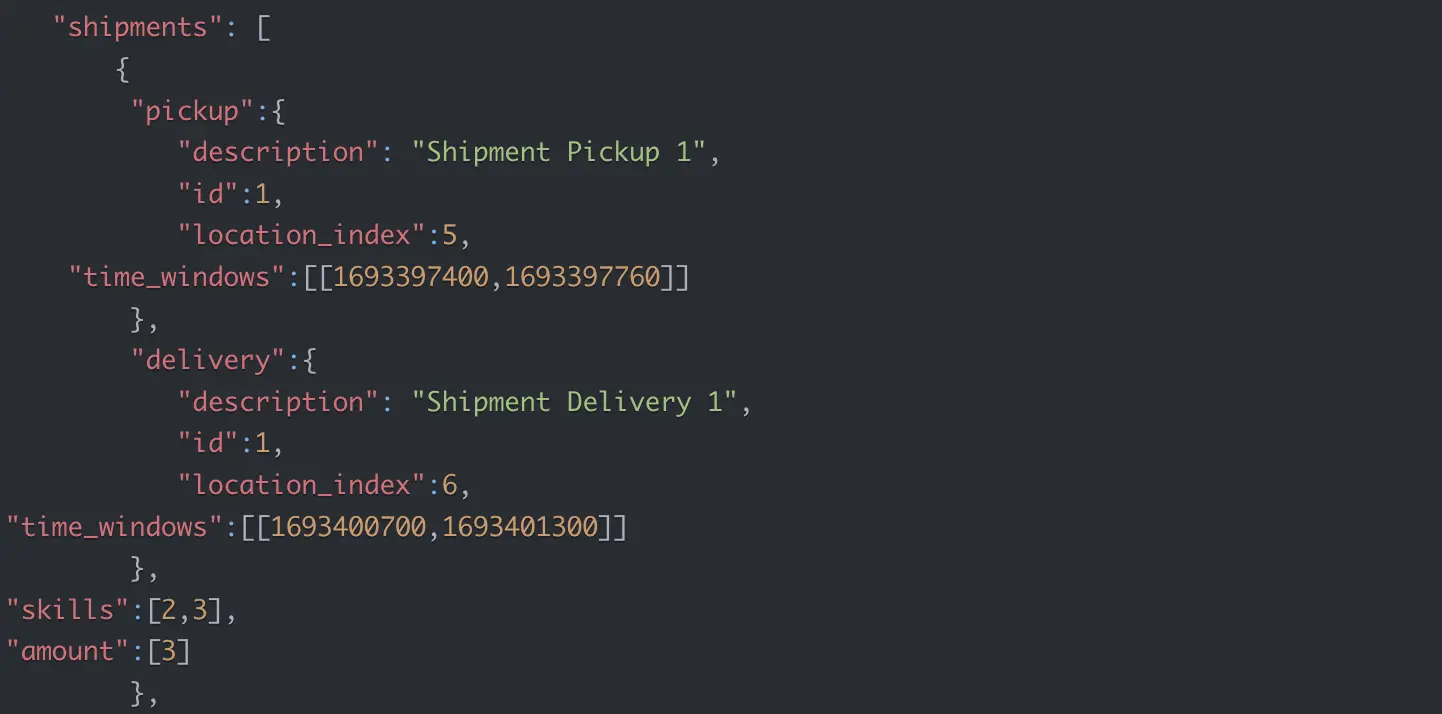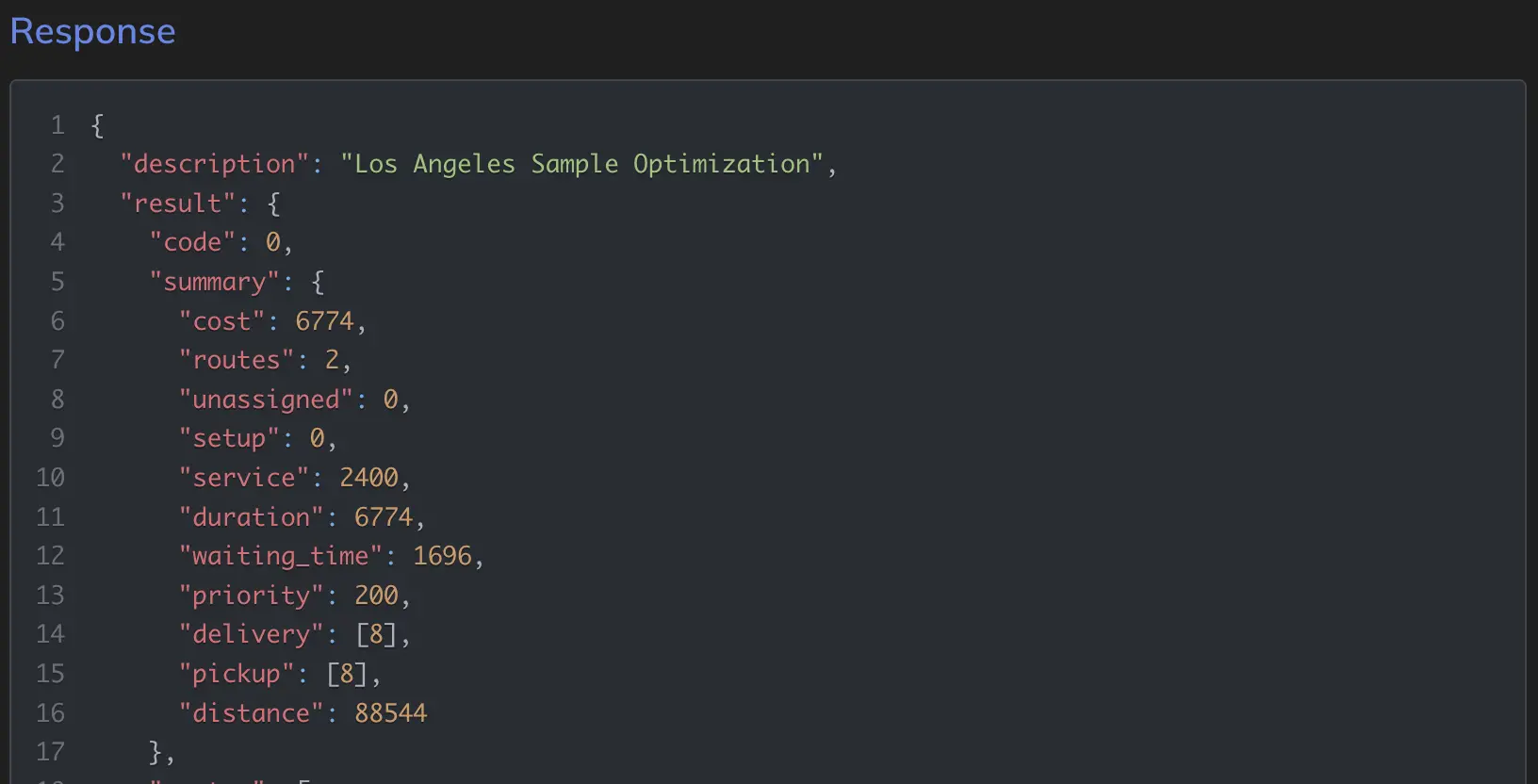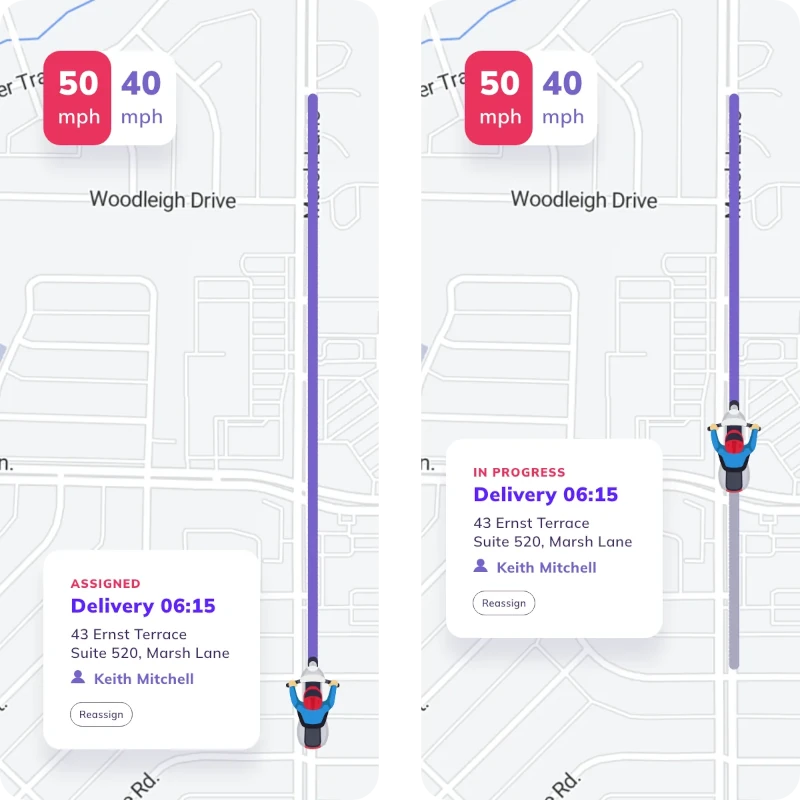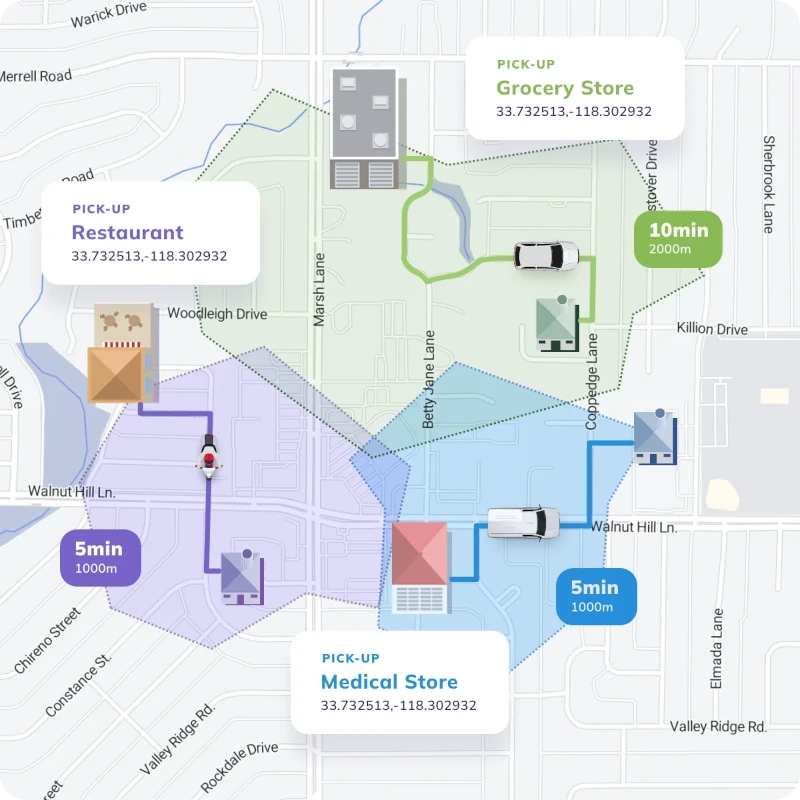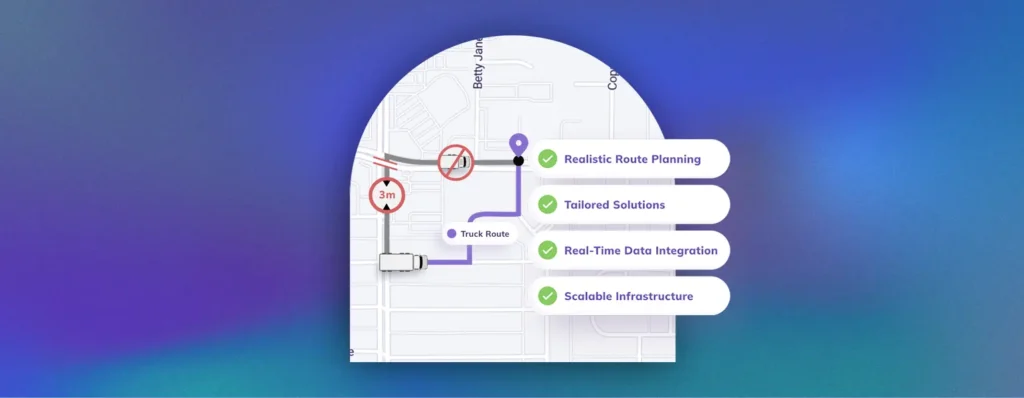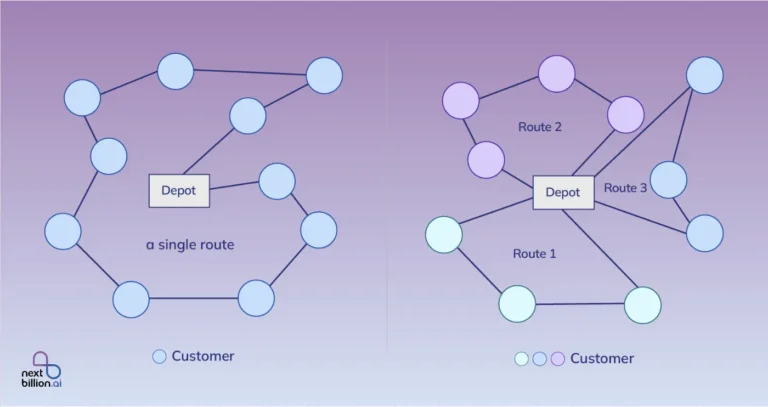
Table of Contents
Imagine cutting hours off your delivery times, saving big on fuel costs, and boosting your fleet’s efficiency—all thanks to route optimization.
Route optimization determines the best routes for your vehicles, reducing travel time, saving fuel, and increasing efficiency. With supply chains becoming more complex, businesses need a smart tool to navigate these challenges.
In this article, you’ll learn how route optimization works, different types, and how it can revolutionize your logistics.
At NextBillion.ai, we’ve helped many companies achieve impressive results—like reducing delivery times by 30% and fuel costs by 25%. Our expertise and real-world success stories show how effective route optimization can transform your business.
What is Route Optimization?
Route optimization is the process of determining the most efficient routes for a fleet of vehicles to deliver goods or services. It involves using advanced algorithms to analyze multiple variables, such as delivery locations, vehicle capacities, time windows, and real-time traffic conditions, to minimize travel distance, time, and costs while meeting all delivery constraints.
Why is Route Optimization Important?
Route optimization is crucial for several reasons:
1. Cost Efficiency: By minimizing travel distance and time, route optimization significantly reduces fuel consumption and operational costs. It also decreases vehicle wear and tear, leading to lower maintenance expenses.
2. Improved Customer Satisfaction: Optimized routes ensure timely deliveries, meeting customer expectations and enhancing satisfaction. Real-time updates on delivery status increase transparency and reliability.
3. Environmental Benefits: Efficient routing reduces fuel consumption and greenhouse gas emissions, contributing to a more sustainable operation.
4. Competitive Advantage: Businesses that optimize their routes can offer better prices and service levels, gaining an edge over competitors. It also allows for scalability without a proportional increase in costs.
How does Route Optimization Work?
Route optimization works through a structured process that involves several key steps:
1. Data Collection
The first step involves gathering accurate and comprehensive data. This includes:
- Customer Locations: Addresses or GPS coordinates of all delivery points.
- Vehicle Information: Number of vehicles, their capacities, and any other constraints.
- Delivery Requirements: Specific delivery time windows, priority deliveries, and other customer-specific instructions.
- Road Network Data: Distances or travel times between locations, current traffic patterns, and road conditions.
2. Algorithm Selection
Various algorithms can be used for route optimization, including:
- Dijkstra’s Algorithm: Finds the shortest path between nodes in a graph.
- Genetic Algorithms: Mimic natural evolution to find optimal solutions for complex routing problems.
- Ant Colony Optimization: Inspired by the behavior of ants, used for solving various optimization problems.
- Simulated Annealing: A probabilistic technique for approximating the global optimum of a given function.
3. Data Input
Input the collected data into route optimization software. This software uses the chosen algorithms to process the data and generate optimized routes.
4. Algorithm Execution
The software runs the optimization algorithms, taking into account all constraints and variables, to determine the most efficient routes.
5. Route Adjustment
Real-time data, such as traffic updates or changes in delivery requirements, may necessitate adjustments to the generated routes. The software can dynamically adjust the routes to maintain efficiency.
6. Output Generation
The final optimized routes are provided, detailing the sequence of stops for each vehicle and the expected travel times.
By following these steps, route optimization ensures that delivery operations are carried out in the most efficient and cost-effective manner, enhancing overall productivity and sustainability.
What are the Different Types of Route Optimization?
There are various types of route optimization, each serving different operational requirements and complexities. Understanding these types can help businesses choose the best approach for effectively optimizing their delivery and service routes.
Static versus Dynamic Route Optimization
Static Route Optimization
Static route optimization includes planning routes in advance using fixed data. This approach does not take into account real-time changes such as traffic conditions, road closures, or last-minute delivery requests.
Static optimization is commonly used in scenarios where delivery schedules and conditions are consistent and do not change frequently.
Advantages of Static Route Optimization
- Simple and easy to implement.
- Suitable for predictable and consistent delivery schedules.
Disadvantages Static Route Optimization
- Inflexibility in dealing with real-time changes.
- In dynamic environments, there is the potential for inefficiency.
Dynamic Route Optimization
In contrast, dynamic route optimization continuously adjusts routes based on real-time data. This includes traffic updates, weather conditions, and any last-minute changes in delivery requirements.
Dynamic optimization is best suited for environments where conditions are constantly changing and immediate adjustments are required to maintain efficiency.
Advantages of Dynamic Route Optimization
- Increased flexibility and responsiveness.
- Improved efficiency and dependability in dynamic environments.
Disadvantages of Dynamic Route Optimization
- More difficult to implement and manage.
- Integrates with real-time data sources.
Route Optimization: Single vs. Multiple Stops
Single-Stop Route Optimization
Single-stop route optimization aims to optimize routes for vehicles that make only one delivery per trip. This is common in situations where deliveries are large or require special handling, making it impractical to combine multiple stops into a single route.
Advantages of Single-Stop Route Optimization
- Route planning was simplified.
- Ideal for specialized deliveries that necessitate dedicated trips.
Disadvantages of Single-Stop Route Optimization
- Less effective use of vehicle capacity.
- Higher operational costs due to longer travel distances.
Multi-Stop Route Optimization
Multi-stop route optimization entails creating routes that include multiple delivery or pickup points in a single trip. This method maximizes vehicle capacity while reducing overall travel distances and time. It is frequently used for parcel delivery, grocery delivery, and field service operations.
Advantages of Multi-Stop Route Optimization
- Increased efficiency and lower operating costs.
- Improved utilization of vehicle capacity.
Disadvantages of Multi-Stop Route Optimization
- The complexity of route planning has increased.
- Advanced optimization algorithms and tools are required.
Understanding the various types of route optimization—static vs. dynamic, single vs. multi-stop—can assist businesses in determining the best strategy to meet their specific requirements.
Static route optimization is appropriate for predictable, stable environments, whereas dynamic route optimization provides flexibility and efficiency under changing conditions.
Single-stop route optimization is best for specialized deliveries, whereas multi-stop route optimization improves vehicle utilization and lowers costs.
How to Do Route Optimization?
NextBillion.ai is a deep tech API and SDK first location technology provider that helps organizations streamline their logistics operations with advanced AI-based solutions.
In this section, I have explained how to do route optimization using NextBillion.ai’s Route Optimization API.
Nextbillion.ai’s Route Optimization API
Nextbillion.ai’s Route Optimization API is designed to help businesses maximize efficiency, save time, and reduce costs by optimizing delivery routes. It handles both Single and Multi-Vehicle Routing Problems (VRP), finding the optimal set of routes for a fleet of vehicles to visit a set of locations while satisfying various constraints.
Components of the API
The Route Optimization API consists of two main components: the input data and the optimization engine.
- Input Data
The input data includes:
Jobs: Stops or places to visit.
Vehicles: Delivery trucks, vans, etc.
Shipments: Pickup and delivery tasks.
- Optimization Engine
The optimization engine uses the input data to determine the most efficient set of routes for the vehicles, considering constraints such as capacity, time windows, and vehicle availability. The API can be customized to meet the specific needs of your business.
Let’s look at the steps of how you can use the route optimization API to plan your delivery routes.
Step 1: Set up Delivery Information
To start planning the best delivery routes, you’ll need to set up some basic information about your deliveries. This includes jobs, shipment, depot and location information and vehicles you have.
First, list the jobs and shipments. Give each job a unique ID, say where it needs to be done, set when it needs to be done, and write down any special skills that are needed.
Remember to list the items that need to be delivered or picked up and how long you think each job will take.
Next, find your depot, which is the hub where all of your vehicles will start their routes. You must give the depot a unique ID and tell where it is located.
After that, you can add your vehicles. Each vehicle should have its own ID number and information about when it works, how much weight it can carry, and where it starts. Also, make sure to list any special skills that the driver or the vehicle needs.
Lastly, list all the places that will be involved in the delivery process. Give each one a unique ID and give their coordinates.
As soon as you have this information ready, you can send it to the route optimization system to start creating the best delivery routes. This setup process ensures that your deliveries are well-organized and work as efficiently as possible.
Step 2: Send Your Data to the Optimization Engine
Now that you’ve set up your delivery details, it’s time to send this information to the optimization engine. To do this, you’ll use the POST method. This method lets you submit all your delivery details and set any rules or constraints you need for the optimization process.
Once you’ve sent your data, the system will give you a unique job ID. Think of this as a reference number for your request. You’ll use this ID to check back and get your optimized routes once the process is complete. It’s a simple way to ensure everything is tracked and managed efficiently.
Step 3: Get Your Optimized Route Results
After you’ve sent your delivery details to the optimization engine, it’s time to get the optimized routes. You’ll do this using the GET method. This is just a way to check in on your request and see the results.
First, use the unique job ID you received when you submitted your data. This ID lets you track the status of your request.
Once everything is processed, the system will give you the optimized routes. You’ll see the sequence of stops for each vehicle and the expected travel times. It’s an easy way to ensure you have the most efficient delivery plan ready to go.
Refer to this Example for detailed information on Route Optimization API.
Step 4: Handling Real-time Traffic Conditions
The optimizer prepares a solution based on traffic conditions at the time of the request. Therefore, different optimization requests with similar tasks or constraint configurations may return different optimized solutions due to changes in traffic conditions. This ensures that the routes are always optimized based on the most current data.
By Nextbillion.ai’s Route Optimization API, businesses can efficiently solve both Single and Multi-Vehicle Routing Problems. The API’s ability to handle complex constraints and real-time data makes it a powerful tool for optimizing delivery routes, reducing operational costs, and improving customer satisfaction.
With a structured approach to configuring and retrieving optimization tasks, businesses can streamline their logistics operations and achieve significant efficiency gains.
What Are the Use Cases for Route Optimization?
Route optimization significantly enhances operational efficiency and service quality in various industries. Let’s look at the prominent use cases of route optimization, highlighting real-world case studies to illustrate its impact.
Time-Critical Logistics
Route optimization is essential for logistics providers handling time-sensitive deliveries. It ensures that multiple stops are planned efficiently, reducing overall travel time and increasing the number of deliveries made per day.
A logistics provider implemented NextBillion.ai’s Route Optimization API to manage their complex delivery schedules. By leveraging dynamic multi-stop route planning, the provider could ensure timely deliveries even under tight deadlines, significantly improving their service reliability and customer satisfaction.
Field Service Management
Route optimization is especially beneficial to field service businesses like maintenance, repair, and installation. Efficient routing ensures that field technicians spend more time doing productive work and less time traveling between job sites.
- Increased Productivity: Optimized routes enable technicians to complete more jobs per day by reducing travel time.
- Reduced Operational Costs: Shorter, more efficient routes mean lower fuel and vehicle maintenance costs.
- Improved Resource Allocation: Route optimization ensures that the right technician is dispatched to the right job at the right time, resulting in higher service quality and efficiency.
A health-tech firm used NextBillion.ai’s route optimization to refine its sample collection schedules. The optimized routes reduced travel time and fuel consumption, leading to a 25% reduction in operational costs. This case highlights how route optimization can streamline field service operations and improve overall efficiency.
Transportation Management System
Transportation Management Systems (TMS) face the challenge of managing complex routing constraints and optimizing transportation costs. Route optimization APIs can address these challenges by providing tailored solutions that integrate seamlessly with existing TMS platforms.
Route optimization is used in transportation management systems to create efficient routes and schedules, which improves service reliability and passenger satisfaction. This is especially important in urban areas, where traffic congestion and high passenger demand can make route planning difficult.
- Enhanced Service Reliability: Optimized routes and schedules ensure buses and cabs arrive on time, reducing passenger wait times.
- Cost Efficiency: Efficient routing reduces fuel consumption and operational costs, making public transportation more sustainable and affordable.
- Increased Ridership: Reliable and efficient service attracts more passengers, which boosts overall ridership and revenue.
Route optimization has diverse applications across different industries, from logistics and field services to transportation management. By leveraging advanced route planning technologies, businesses can achieve higher efficiency, cost savings, and improved service quality.
What are the Benefits of Route planning Optimization?
Route planning optimization has significant benefits for businesses in a variety of sectors. Companies that optimize their fleet routes can achieve increased efficiency, cost savings, and customer satisfaction. The following sections discuss the top three advantages of route planning optimization.
Cost Reduction
One of the most significant advantages of route planning optimization is lower operational costs. Optimized routes result in lower fuel consumption, vehicle maintenance costs, and overall operational expenses.
Fuel Savings: By identifying the most efficient routes, businesses can reduce the distance traveled and fuel consumption. This not only saves money but also promotes environmental sustainability.
Maintenance Costs: Efficient routing reduces vehicle wear and tear, which results in fewer breakdowns and lower maintenance costs. Longer vehicle lifespans also imply less frequent replacements.
Labor Costs: Optimized routes allow drivers to complete deliveries faster, resulting in lower overtime and labor costs.
Increased Customer Satisfaction
Optimized routes ensure timely deliveries and consistent service, which directly improves customer satisfaction. Meeting delivery windows and providing accurate arrival times are critical for retaining customers and establishing trust.
Timely Deliveries: Ensuring that deliveries are completed within the time frames specified increases customer satisfaction and loyalty. Customers value reliable and timely service.
Real-Time Updates: Route planning optimization frequently includes real-time tracking and updates, allowing customers to know when their package will arrive. This transparency promotes trust and enhances the overall customer experience.
Fewer Delays: By taking into account real-time traffic conditions and other variables, optimized routes reduce the likelihood of delays, resulting in a more efficient delivery process.
Enhanced Operational Efficiency
Route planning optimization streamlines logistics operations, increasing efficiency and productivity. This results in better resource utilization, greater delivery capacity, and more efficient scheduling.
Increased Delivery Capacity: Optimized routes allow drivers to make more stops in less time, which increases the fleet’s overall delivery capacity. This means more deliveries can be made using the same number of vehicles.
Better Resource Utilization: Efficient routing ensures that vehicles and drivers are fully utilized, reducing idle time and increasing productivity.
Streamlined Scheduling: Route optimization simplifies the scheduling process, making it easier to plan and adjust routes in response to real-time data and changing conditions.
Route optimization provides numerous benefits to businesses, including cost savings, increased customer satisfaction, and improved operational efficiency.
Companies can use advanced algorithms and real-time data to optimize their routes and streamline their logistics operations. Whether in logistics, e-commerce, or field services, route optimization is a powerful tool for increasing business success and competitiveness.
Getting Started with Route Optimization
Route optimization is a vital component for any business looking to enhance its logistics operations, reduce costs, and improve customer satisfaction.
By using Nextbillion.ai’s Route Optimization API, you can streamline your delivery processes and achieve significant efficiency gains. Whether you’re managing a fleet for e-commerce deliveries, field service management, or public transportation, optimized routing can make a substantial difference.
Get Your API Key and Get Started
Ready to transform your logistics with route optimization? It’s time to take the next step.
Contact Nextbillion.ai and obtain your API key to access the Route Optimization API.
About Author
Rishabh Singh
Rishabh Singh is a Freelance Technical Writer at NextBillion.ai. He specializes in Programming, Data analytics and technical consulting, turning complex tech into clear and engaging content.





